Wind Waker Water – NO Textures needed!
Recreation of the water from the Legend of Zelda – The Wind Waker
NO Texture needed! Just drag and drop!
Usually you need a texture to do this kind of stuff but I like to keep my things CC0 so I wanted to avoid using any textures.
Luckily I found this: 2D Wind Waker Water – Shadertoy
Which procedurally generates the foam, so I:
- Modified it to work with Godot
- Created a vertex shader for it so it moves like a wave
- And used some Fractal Brownian Motion to make it more interesting!
The default colors are actually the colors pulled straight from the original 2002 GameCube release of the game (or at least as close I could get to it using my screen to read the hex colors).
The settings I used are in the screenshots.
This shader is best experienced listening to this: Wind Waker The Great Sea (Ocean) Music Extended – YouTube
Shader code
// Wind Waker style water - NekotoArts
// Adapted from https://www.shadertoy.com/view/3tKBDz
// After which I added in some fractal Brownian motion
// as well as vertex displacement
shader_type spatial;
uniform vec4 WATER_COL : hint_color = vec4(0.04, 0.38, 0.88, 1.0);
uniform vec4 WATER2_COL : hint_color = vec4(0.04, 0.35, 0.78, 1.0);
uniform vec4 FOAM_COL : hint_color = vec4(0.8125, 0.9609, 0.9648, 1.0);
uniform float distortion_speed = 2.0;
uniform vec2 tile = vec2(5.0, 5.0);
uniform float height = 2.0;
uniform vec2 wave_size = vec2(2.0, 2.0);
uniform float wave_speed = 1.5;
const float M_2PI = 6.283185307;
const float M_6PI = 18.84955592;
float random(vec2 uv) {
return fract(sin(dot(uv.xy,
vec2(12.9898,78.233))) *
43758.5453123);
}
float noise(vec2 uv) {
vec2 uv_index = floor(uv);
vec2 uv_fract = fract(uv);
// Four corners in 2D of a tile
float a = random(uv_index);
float b = random(uv_index + vec2(1.0, 0.0));
float c = random(uv_index + vec2(0.0, 1.0));
float d = random(uv_index + vec2(1.0, 1.0));
vec2 blur = smoothstep(0.0, 1.0, uv_fract);
return mix(a, b, blur.x) +
(c - a) * blur.y * (1.0 - blur.x) +
(d - b) * blur.x * blur.y;
}
float fbm(vec2 uv) {
int octaves = 6;
float amplitude = 0.5;
float frequency = 3.0;
float value = 0.0;
for(int i = 0; i < octaves; i++) {
value += amplitude * noise(frequency * uv);
amplitude *= 0.5;
frequency *= 2.0;
}
return value;
}
float circ(vec2 pos, vec2 c, float s)
{
c = abs(pos - c);
c = min(c, 1.0 - c);
return smoothstep(0.0, 0.002, sqrt(s) - sqrt(dot(c, c))) * -1.0;
}
// Foam pattern for the water constructed out of a series of circles
float waterlayer(vec2 uv)
{
uv = mod(uv, 1.0); // Clamp to [0..1]
float ret = 1.0;
ret += circ(uv, vec2(0.37378, 0.277169), 0.0268181);
ret += circ(uv, vec2(0.0317477, 0.540372), 0.0193742);
ret += circ(uv, vec2(0.430044, 0.882218), 0.0232337);
ret += circ(uv, vec2(0.641033, 0.695106), 0.0117864);
ret += circ(uv, vec2(0.0146398, 0.0791346), 0.0299458);
ret += circ(uv, vec2(0.43871, 0.394445), 0.0289087);
ret += circ(uv, vec2(0.909446, 0.878141), 0.028466);
ret += circ(uv, vec2(0.310149, 0.686637), 0.0128496);
ret += circ(uv, vec2(0.928617, 0.195986), 0.0152041);
ret += circ(uv, vec2(0.0438506, 0.868153), 0.0268601);
ret += circ(uv, vec2(0.308619, 0.194937), 0.00806102);
ret += circ(uv, vec2(0.349922, 0.449714), 0.00928667);
ret += circ(uv, vec2(0.0449556, 0.953415), 0.023126);
ret += circ(uv, vec2(0.117761, 0.503309), 0.0151272);
ret += circ(uv, vec2(0.563517, 0.244991), 0.0292322);
ret += circ(uv, vec2(0.566936, 0.954457), 0.00981141);
ret += circ(uv, vec2(0.0489944, 0.200931), 0.0178746);
ret += circ(uv, vec2(0.569297, 0.624893), 0.0132408);
ret += circ(uv, vec2(0.298347, 0.710972), 0.0114426);
ret += circ(uv, vec2(0.878141, 0.771279), 0.00322719);
ret += circ(uv, vec2(0.150995, 0.376221), 0.00216157);
ret += circ(uv, vec2(0.119673, 0.541984), 0.0124621);
ret += circ(uv, vec2(0.629598, 0.295629), 0.0198736);
ret += circ(uv, vec2(0.334357, 0.266278), 0.0187145);
ret += circ(uv, vec2(0.918044, 0.968163), 0.0182928);
ret += circ(uv, vec2(0.965445, 0.505026), 0.006348);
ret += circ(uv, vec2(0.514847, 0.865444), 0.00623523);
ret += circ(uv, vec2(0.710575, 0.0415131), 0.00322689);
ret += circ(uv, vec2(0.71403, 0.576945), 0.0215641);
ret += circ(uv, vec2(0.748873, 0.413325), 0.0110795);
ret += circ(uv, vec2(0.0623365, 0.896713), 0.0236203);
ret += circ(uv, vec2(0.980482, 0.473849), 0.00573439);
ret += circ(uv, vec2(0.647463, 0.654349), 0.0188713);
ret += circ(uv, vec2(0.651406, 0.981297), 0.00710875);
ret += circ(uv, vec2(0.428928, 0.382426), 0.0298806);
ret += circ(uv, vec2(0.811545, 0.62568), 0.00265539);
ret += circ(uv, vec2(0.400787, 0.74162), 0.00486609);
ret += circ(uv, vec2(0.331283, 0.418536), 0.00598028);
ret += circ(uv, vec2(0.894762, 0.0657997), 0.00760375);
ret += circ(uv, vec2(0.525104, 0.572233), 0.0141796);
ret += circ(uv, vec2(0.431526, 0.911372), 0.0213234);
ret += circ(uv, vec2(0.658212, 0.910553), 0.000741023);
ret += circ(uv, vec2(0.514523, 0.243263), 0.0270685);
ret += circ(uv, vec2(0.0249494, 0.252872), 0.00876653);
ret += circ(uv, vec2(0.502214, 0.47269), 0.0234534);
ret += circ(uv, vec2(0.693271, 0.431469), 0.0246533);
ret += circ(uv, vec2(0.415, 0.884418), 0.0271696);
ret += circ(uv, vec2(0.149073, 0.41204), 0.00497198);
ret += circ(uv, vec2(0.533816, 0.897634), 0.00650833);
ret += circ(uv, vec2(0.0409132, 0.83406), 0.0191398);
ret += circ(uv, vec2(0.638585, 0.646019), 0.0206129);
ret += circ(uv, vec2(0.660342, 0.966541), 0.0053511);
ret += circ(uv, vec2(0.513783, 0.142233), 0.00471653);
ret += circ(uv, vec2(0.124305, 0.644263), 0.00116724);
ret += circ(uv, vec2(0.99871, 0.583864), 0.0107329);
ret += circ(uv, vec2(0.894879, 0.233289), 0.00667092);
ret += circ(uv, vec2(0.246286, 0.682766), 0.00411623);
ret += circ(uv, vec2(0.0761895, 0.16327), 0.0145935);
ret += circ(uv, vec2(0.949386, 0.802936), 0.0100873);
ret += circ(uv, vec2(0.480122, 0.196554), 0.0110185);
ret += circ(uv, vec2(0.896854, 0.803707), 0.013969);
ret += circ(uv, vec2(0.292865, 0.762973), 0.00566413);
ret += circ(uv, vec2(0.0995585, 0.117457), 0.00869407);
ret += circ(uv, vec2(0.377713, 0.00335442), 0.0063147);
ret += circ(uv, vec2(0.506365, 0.531118), 0.0144016);
ret += circ(uv, vec2(0.408806, 0.894771), 0.0243923);
ret += circ(uv, vec2(0.143579, 0.85138), 0.00418529);
ret += circ(uv, vec2(0.0902811, 0.181775), 0.0108896);
ret += circ(uv, vec2(0.780695, 0.394644), 0.00475475);
ret += circ(uv, vec2(0.298036, 0.625531), 0.00325285);
ret += circ(uv, vec2(0.218423, 0.714537), 0.00157212);
ret += circ(uv, vec2(0.658836, 0.159556), 0.00225897);
ret += circ(uv, vec2(0.987324, 0.146545), 0.0288391);
ret += circ(uv, vec2(0.222646, 0.251694), 0.00092276);
ret += circ(uv, vec2(0.159826, 0.528063), 0.00605293);
return max(ret, 0.0);
}
// Procedural texture generation for the water
vec3 water(vec2 uv, vec3 cdir, float iTime)
{
uv *= vec2(0.25);
uv += fbm(uv) * 0.2;
// Parallax height distortion with two directional waves at
// slightly different angles.
vec2 a = 0.025 * cdir.xz / cdir.y; // Parallax offset
float h = sin(uv.x + iTime); // Height at UV
uv += a * h;
h = sin(0.841471 * uv.x - 0.540302 * uv.y + iTime);
uv += a * h;
// Texture distortion
float d1 = mod(uv.x + uv.y, M_2PI);
float d2 = mod((uv.x + uv.y + 0.25) * 1.3, M_6PI);
d1 = iTime * 0.07 + d1;
d2 = iTime * 0.5 + d2;
vec2 dist = vec2(
sin(d1) * 0.15 + sin(d2) * 0.05,
cos(d1) * 0.15 + cos(d2) * 0.05
);
vec3 ret = mix(WATER_COL.rgb, WATER2_COL.rgb, waterlayer(uv + dist.xy));
ret = mix(ret, FOAM_COL.rgb, waterlayer(vec2(1.0) - uv - dist.yx));
return ret;
}
void vertex(){
float time = TIME * wave_speed;
vec2 uv = UV * wave_size;
float d1 = mod(uv.x + uv.y, M_2PI);
float d2 = mod((uv.x + uv.y + 0.25) * 1.3, M_6PI);
d1 = time * 0.07 + d1;
d2 = time * 0.5 + d2;
vec2 dist = vec2(
sin(d1) * 0.15 + sin(d2) * 0.05,
cos(d1) * 0.15 + cos(d2) * 0.05
);
VERTEX.y += dist.y * height;
}
void fragment()
{
vec2 uv = UV;
ALBEDO = vec3(water(uv * tile, vec3(0,1,0), TIME * distortion_speed));
}
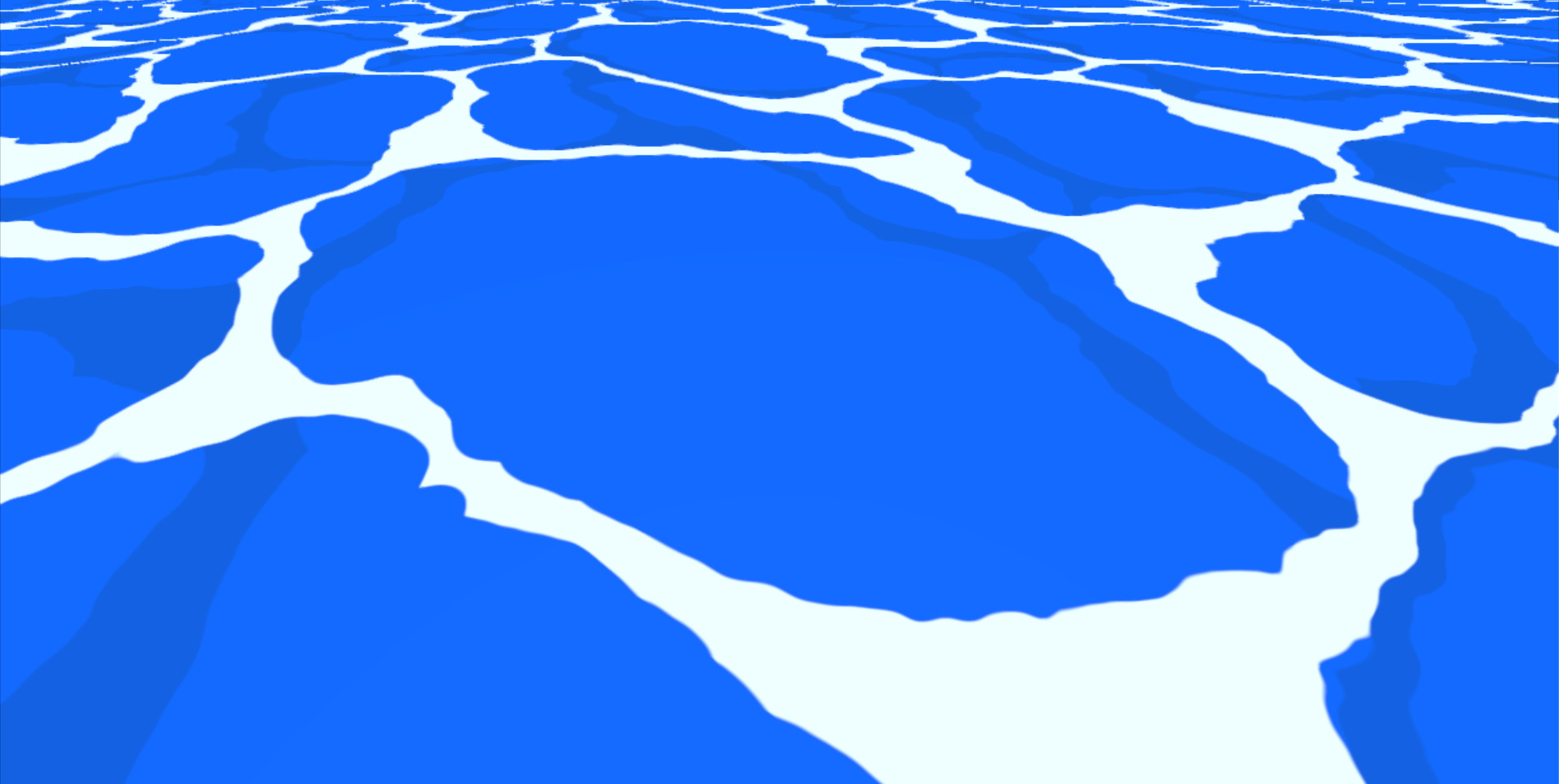


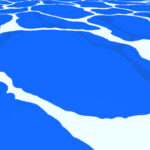
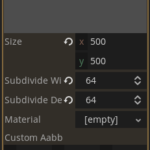
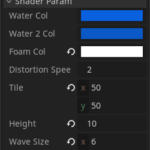

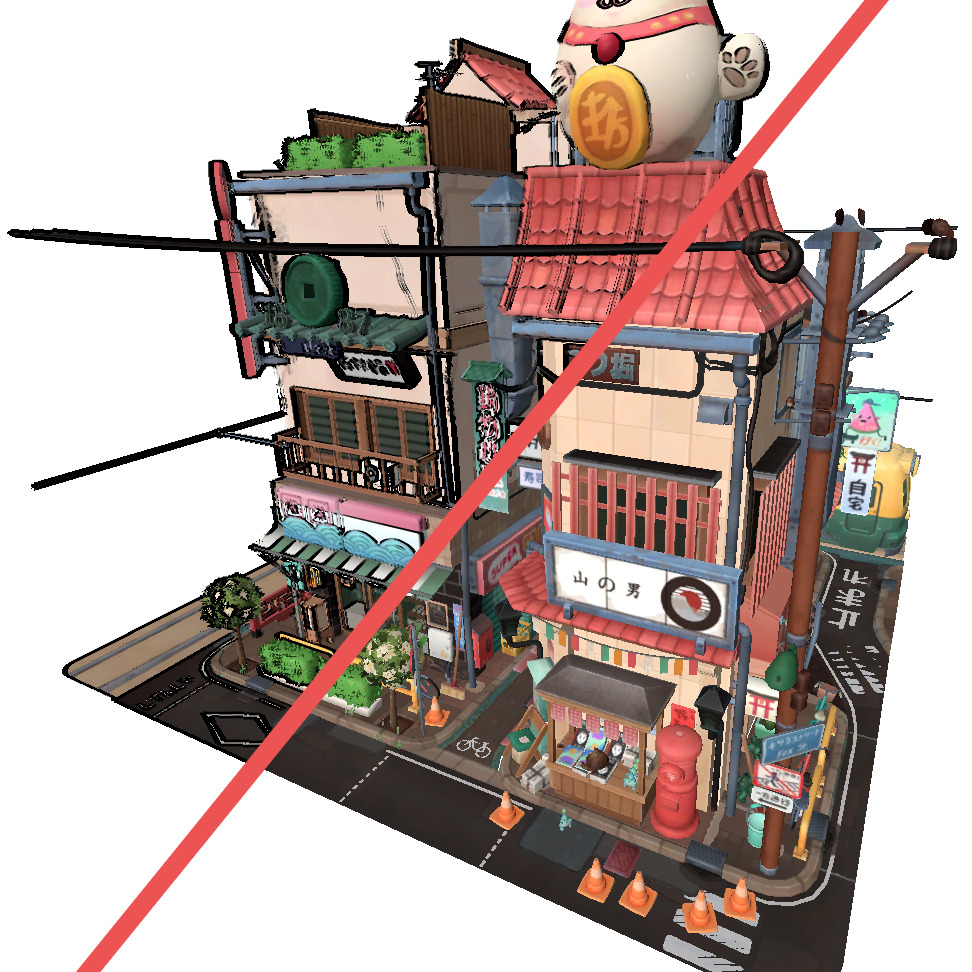
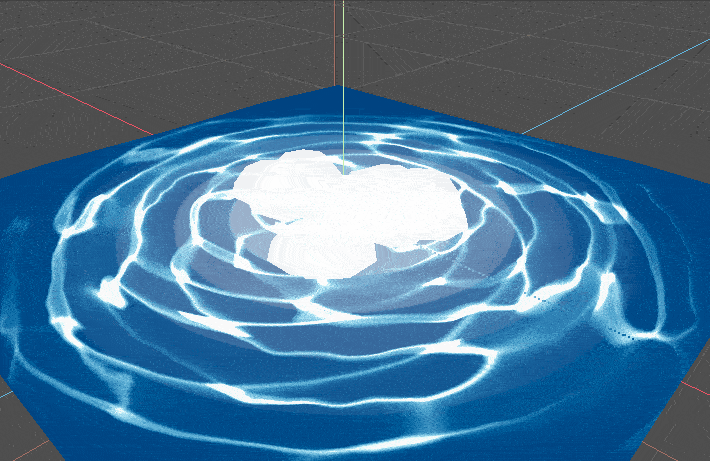

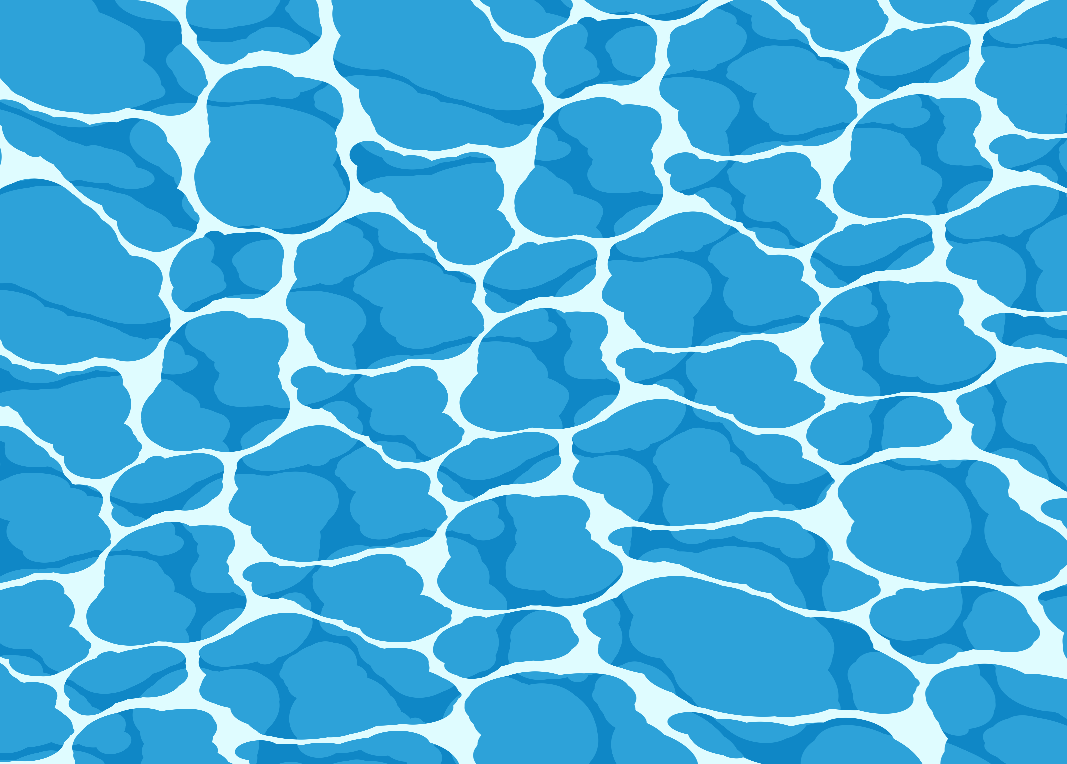
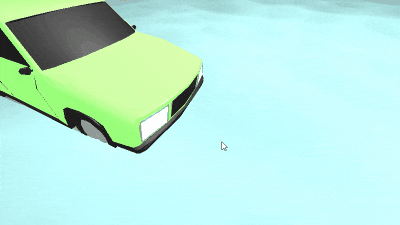
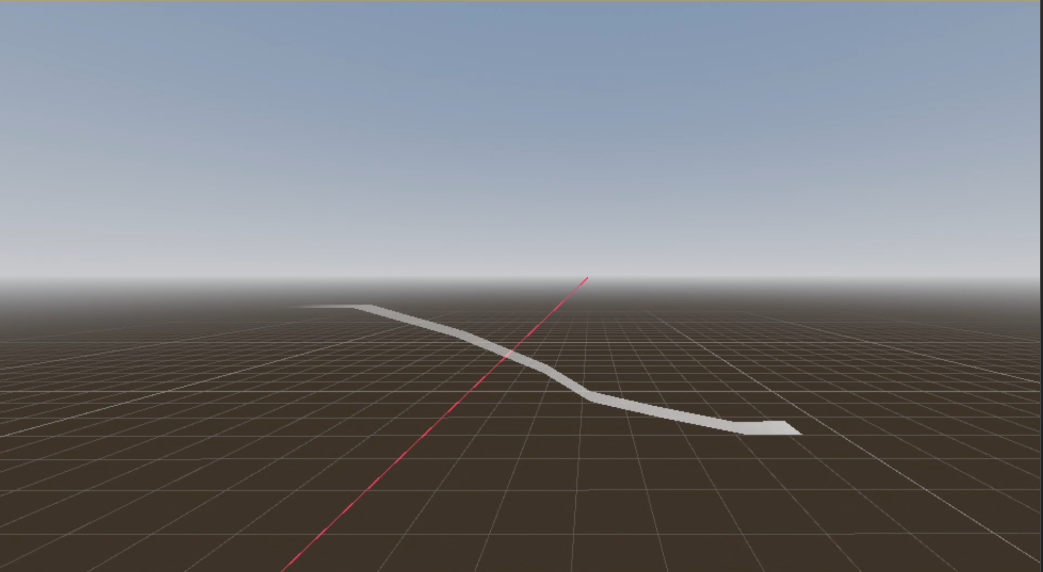
Heya, I used the shader in my game and made 2 modifications:
changed to
this was necessary for the shader to compile and run in my browser (firefox).
Also added a uv_offset, because my game had a big scale and using a mesh that big caused jitter in the web browser. So, I used a small mesh and moved it around with the player and updated the uv_offset to create an illusion of movement.
changed to
Thanks for the great shader!
The loop problem might be caused by my graphics card aswell. Here’s a stack overflow entry about it: https://stackoverflow.com/questions/38986208/webgl-loop-index-cannot-be-compared-with-non-constant-expression/39298265
Sorry for the late reply, its been a while since I’ve checked in here 🙁
I’m glad you were able to make use of the shader, and also thanks for sharing details on what you found out! I didn’t know that some GPUs require a hard limit on for loops, that’s pretty interesting tho.
Hi,
thanks for this great shader.
While this is working fine on 2D plane. I’m struggling to make this work on the surface of 3D sphere. Any idea or help would be appreciate!
I have posted a picture from my game here
https://github.com/aik6980/fj2021_game/issues/1
Hi, thanks for the great shader it’s really good!! I’ve used it in my game, mixed with 2 other shaders. Though there’s some issue with the tiling that I don’t know how to fix. Do you have any idea why it cuts the foam as if the texture was not seamless?
Hi sorry but do you have instructions on how to input this shader? do we make a script and put it in?
In your scene create a MeshInstance3d -> Plane -> Subdivision Width, Depth = 100,100
You can make the mesh Unique -> Save As
Open up your new mesh and apply a Spatial Material, Copy + Paste shader -> Unique -> Save As
Hey, some of us are complete noobs at this, can anyone point me to a video or explain in a lot more detail on what I do with shader code inside of Godot?
I am trying to use this in a game jam game I’m working on. How can I replicate the logic for the vertex shader in a script attached to a Mesh Node to create buoyancy and such? I can’t copy the logic straight up because it uses UVs over things like worldposition. I’m fairly new to Godot so I’m struggling to figure out how to make it happen, any suggestions would be awesome!
Not sure if you found a answer. But you would create MeshInstance3d -> Plane -> Click on Mesh -> Subdivision Width, Depth = 100, 100